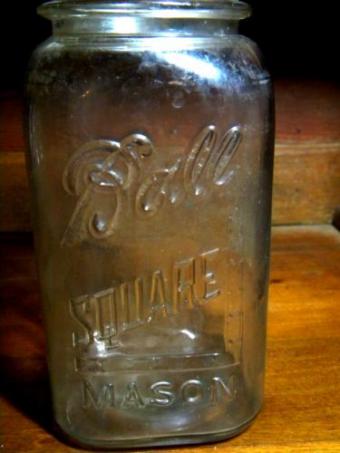
If you can your own fruits and vegetables, you might be surprised to find the value of old canning jars is often significant, with some examples reaching into the thousands of dollars. If you are using the ones your grandmother left you, that jar of spiced peaches might be worth more than you think.
Understanding the Value of Antique Canning Jars
Value depends on a lot of factors, but many canning jars sell for under $15. However, these are a few notable examples of what your canning jar could be worth:
- An antique Ball brand perfect Mason jar sold on eBay for about $80, likely because its deep olive green color is relatively rare.
- According to Country Living, an upside-down Ball canning jar designed to rest on its lid is relatively rare and made between 1900 and 1910. It's valued at about $1,000.
- Country Living also notes that a unique 1858 design, called the Willoughby Stopple, is especially valuable because it proved to be defective. People commonly threw away this jar, which makes it rare and worth about $500 today.
- An unusual bright yellow color contributed to the value of an otherwise unremarkable canning jar that sold on eBay recently for about $67.
If you are an aspiring collector, you may want to pick up a copy of Redbook 9, available on Amazon. This book is no longer is print, but it is avaialble on secondary markets and you can get descriptions and basic values of your jars. Another book to consider is 1,000 Fruit Jars.
Embossing
Many canning jars feature the manufacturer's name or the patent date embossed on the glass. According to Minnetrista, the style of embossing can help you date the jar, especially for those made by Ball. An embossed design that is unusual or unique will fetch more. Sometimes, you can find a jar that has a word misspelled, and mishaps like this make the jar rarer and add to the value.
Closures
There are a variety of closures for canning jars from zinc lids to the modern screw-on lids. If you find a jar with its original closure, it will generally be more valuable than the jar on its own or with a replacement lid. Companies experimented with numerous types of closures, many of which were very detailed, unusual, and impractical. Unique closures might not have been favored by yesteryear's homemaker, but they are a hot commodity among today's collector.
Collectors Weekly notes some types of closures include the following:
- Mason jars were the first to feature screw-on zinc lids.
- Some jars used wax seals or a combination of wax and glass.
- Milk glass inserts helped to protect food from contact with metal lids in some examples.
- Some metal lids used rubber gaskets to avoid food contact.
- Metal clamps or screws were another common feature.
Color
Canning jars come in a variety of colors besides clear glass. The most unusual of these are worth more money than the common colors. According to Collectors Weekly, clear glass and aqua jars are quite common, but the following colors are rarer and more valuable:
- Amber
- Green
- Purple
- Milk glass (white)
- Cobalt
Color can be difficult to describe. What is light blue to one person may seem aquamarine to another. You can see a variety of colors on the Hoosier Jar Color Page. This can help you identify the jar you have more accurately.
Size
Many jars are quart-sized with some being pint or jelly jars. Larger canning jars are unusual, and fewer have survived over the years. These can go for much higher prices at auction, depending on other factors.
Age
Age is an important factor in the evaluation of canning jars, especially since they are made of glass and breakable. Generally, the older the jar, the more it is worth. Here are some tips to help you figure the age of your jar:
- Pontil marks or indented rings in the bottom of the jar mean it was hand finished by a glass blower. Collectors Weekly notes these marks often appear on jars made before the Civil War, although a few were made after that time.
- Seams also help determine the age of your jar: Seams that go all the way up the jar indicate it was machine made, probably between 1895 and 1915.
- Color can also help date your jar. For instance, purple glass indicates a jar that was made prior to the first World War.

Design
How the jar is shaped can make a difference in the value. Square jars, for example, date as far back as the 1890s. Although they took up less space in the pantry, they were never as popular as the regular canning jars and so are a little rare - making them a little higher in value. Other unusual designs can add to value as well.
Condition
Of course, the better the condition of the jar, the more it will be worth. Chips and cracks will diminish the value of old canning jars significantly, while a jar in good condition with its original lid will be worth the most.
Consider a Professional Appraisal
Many factors can affect the value of old canning jars, but ultimately, rare jars in good condition will fetch the most money. If you think you have an unusual jar that may be valuable, consider having it professionally appraised. That's the only sure way to determine whether you have a pretty piece of canning history or a functional treasure from yesteryear. Next, learn about Atlas Mason jar values and how to date them.







